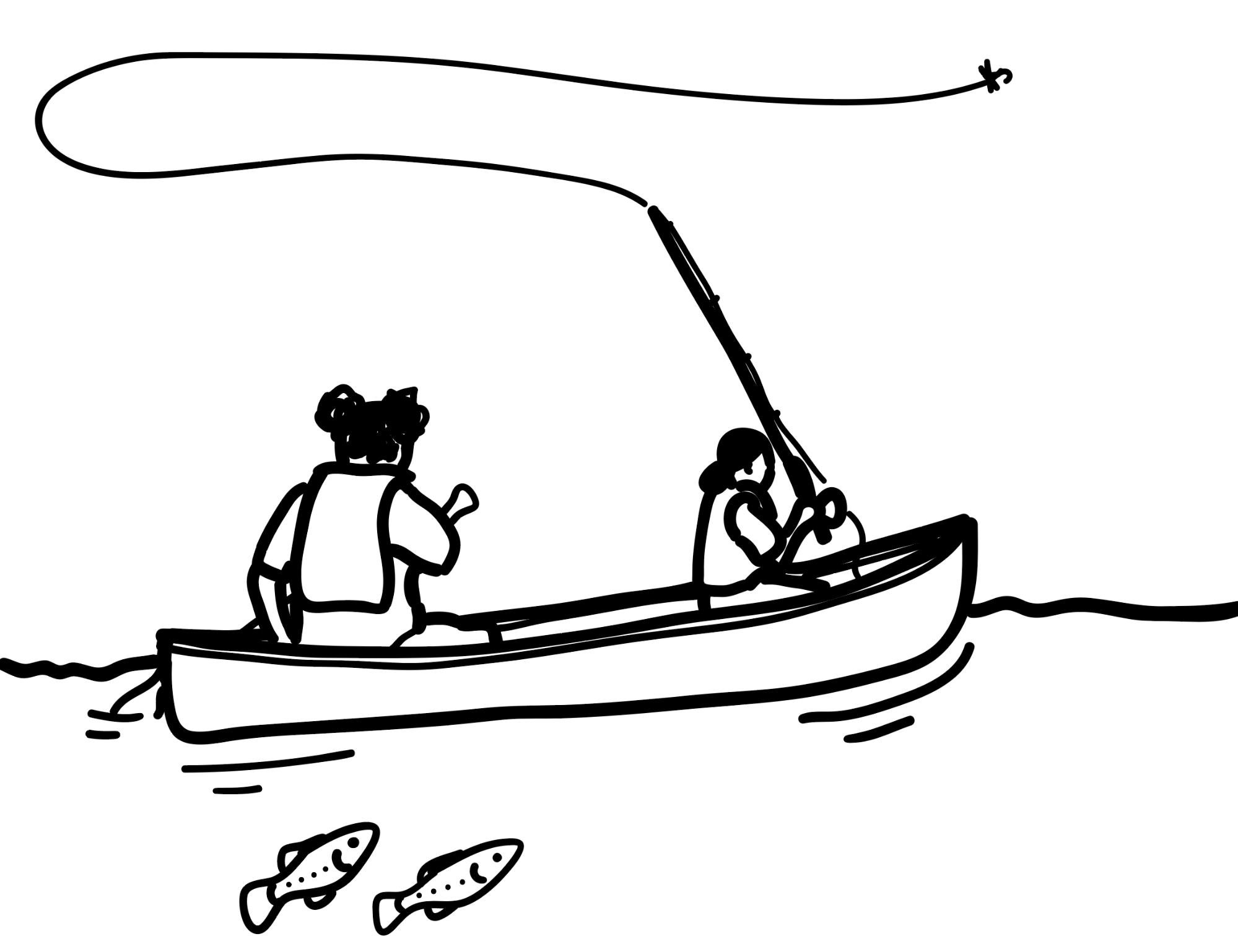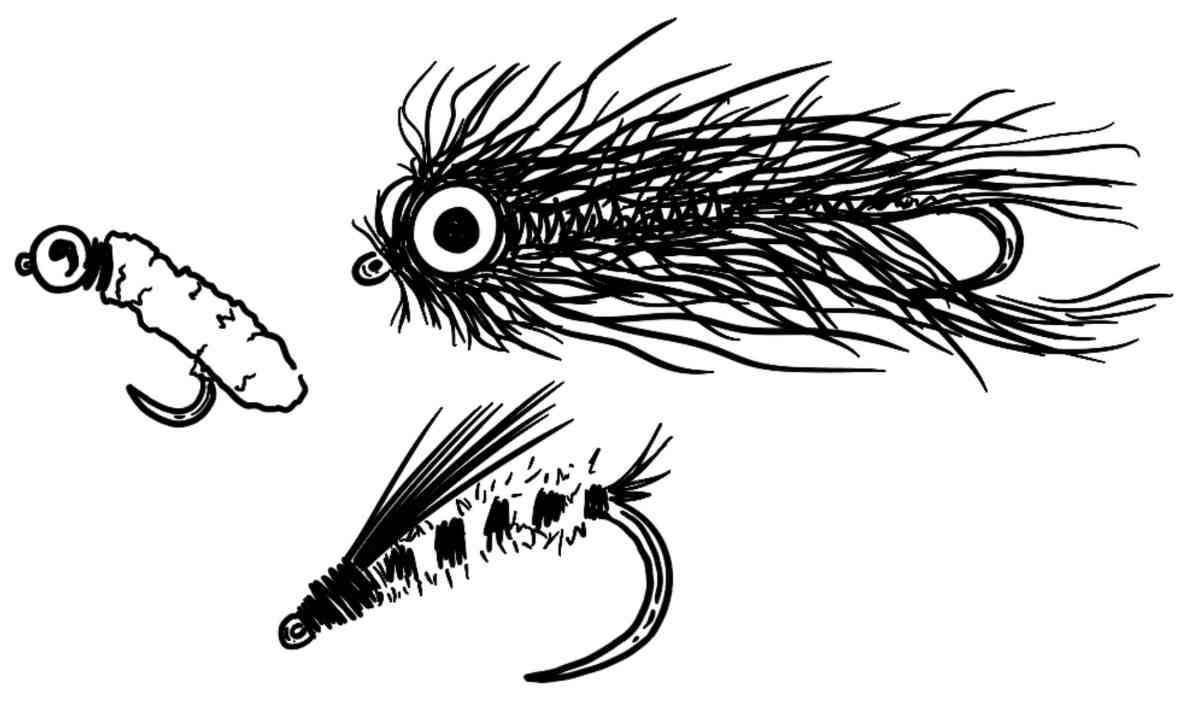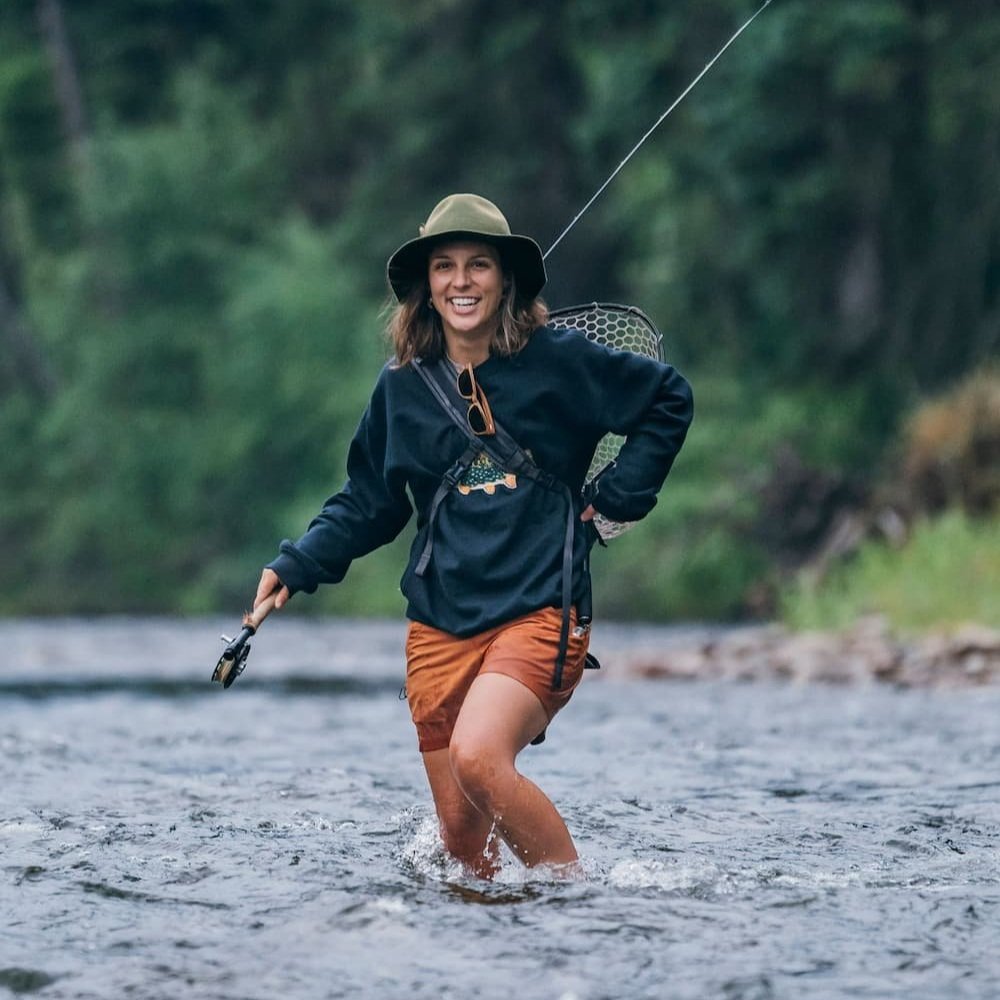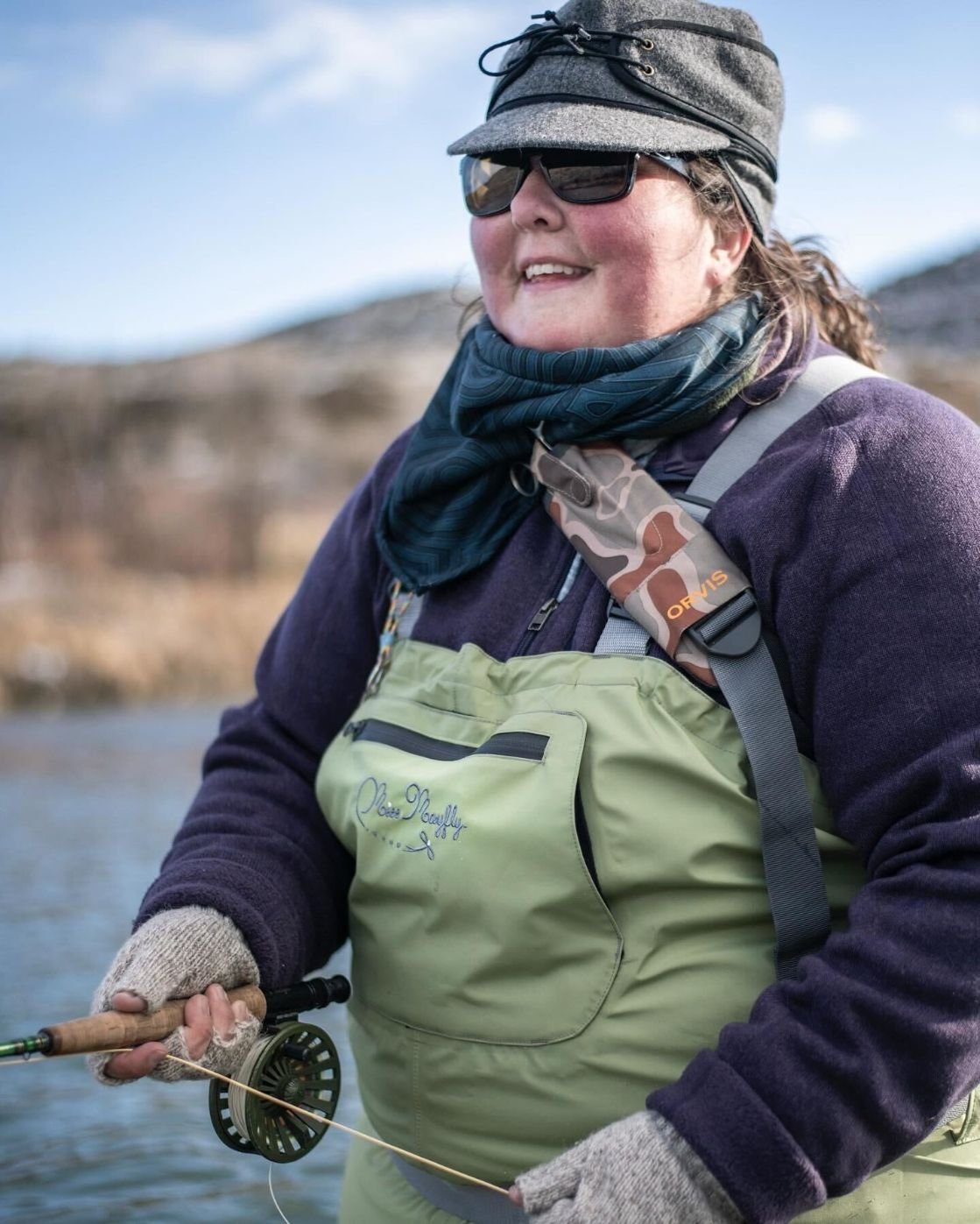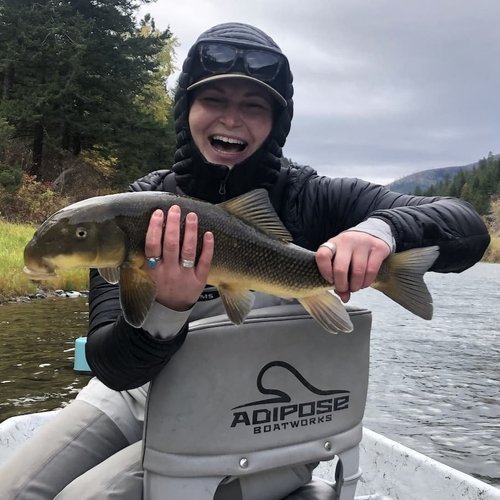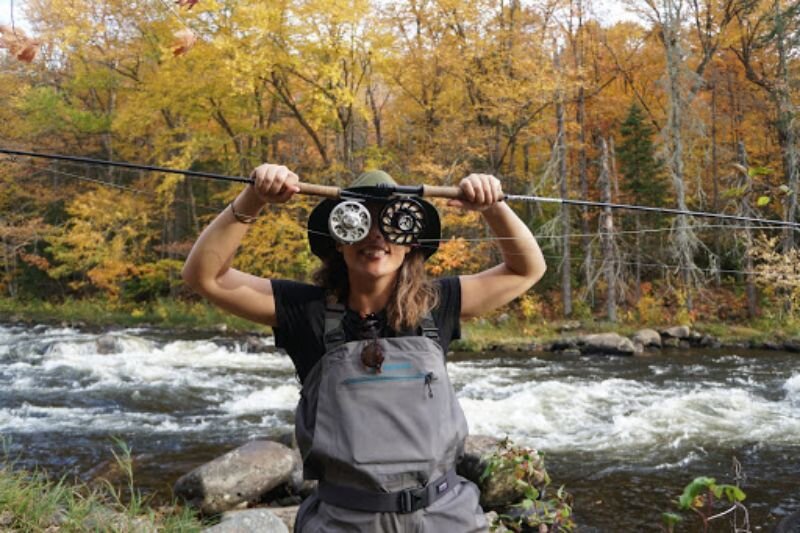Beginner Fly Fishing Skills and Gear
Tips for the beginner angler on how to use and practice with your Fly fishing gear
What do I really need to start fly fishing? This all depends on where you live and what kind of fishing access is near to you! Let’s review a few common fishing scenarios here to give a sense of how location and access dictate your fly fishing gear needs and the skills you can practice.
See our Fly Fishing Accessories Checklist for more details on the right gear for you--wherever you are on your fly fishing journey--from the beginner angler to an experienced angler.
Here are some of the questions we’ll answer:
Do you want to get into fishing but aren’t sure how?
Have you dreamed of hiking or backpacking to an alpine lake, but aren’t sure where to start?
Are you looking for an accessible, body-positive way of spending time outdoors?
We create reader-supported, objective, independently-selected gear reviews. This story may contain affiliate links, which help fund our website. When you click on the links to purchase gear, we may get a commission — without costing you an extra cent. Thank you for supporting our work and mission of outdoor coverage for every body! Learn more.
Video
Confluence Collective and Treeline Review partnered in a Q&A panel and discussion about fishing!
Here are some of the questions we answer:
Do you want to get into fishing but aren’t sure how?
Have you dreamed of hiking or backpacking to an alpine lake, but aren’t sure where to start?
Are you looking for an accessible, body-positive way of spending time outdoors?
For more what gear you need for beginner fly-fishing, Confluence Collective writers get into the weeds in The Best Beginner Fly Fishing Combos.
I want to practice fishing while staying completely dry or I can’t get out to the water, but still want to learn!
Great! This means you are able to practice fly casting, provided you have a few pieces of gear to get started.
What you need:
Wide open space: a yard, quiet drive, or road without trees hanging too low will do the trick.
A fly fishing rod and fly reel set up with fly line: usually beginner kits include all you need here, including backing which connects your fly line to your reel—something you need but won’t really see when you cast. It's worth noting that not all rods and reels for sale are designed for fly fishing. Look specifically for a fly rod and fly reel. See our guide to the Best Beginner Fly Fishing Combo, which is a kit that includes everything a fly angler needs to get started, including a fly rod, fly reel, and a leader.
A leader: to connect to your fly line. This is a translucent line that will give you the benefit of being less observable by fish below the surface than brightly colored fly line. This is sometimes included with your beginner fly rod and fly reel combo.
A snippet of yarn, or a false fly: to tie on to the end of your leader, giving you subtle weight to propel when you cast.
A target [optional]: if you have something you can put out on the ground as a target (e.g.,spare shoe, traffic cone, stuffed animal this can be used as a focal point to practice your accuracy and casting form before you start targeting fish on the water.
How to practice casting:
Once you have these basics in hand, you can find lots of fly casting tutorials and how-to videos online to get some guidance on form, technique, and what to pay close attention to as you get started. Guides are also great resources for beginners, and many offer casting lessons that can take place off the water.
To practice casting, you can also find a buddy through community groups around you. A good place to start is online or groups with a social media presence where you can see who is nearby and might be interested in having a newbie fishing buddy. They can give feedback on casting on things like where to put your fly rod tip, what to do with your fly line, as well as see the differences in rod action.
Because fly fishing has a steep learning curve, many who have stuck with it and become avid anglers are very willing to help someone new learn, knowing they wouldn’t be where they are without having someone offer the same kind of support to them at some point. Be open about your interests, your needs, and see who might be in your area!
I want to get out on the water, but I don’t want to actually get too deep in the water.
No worries, lots of fly fishing locations are accessible by foot, and sometimes you can fish without even getting your toes wet. Smaller rivers, streams, brooks, and ponds are great options for this kind of fishing.
Man-made water features can even work in some cases, such as canals through urban areas or ponds in parks if they have been stocked with fish.
What you need:
A riverbank, shoreline, or broadly a place to stand with some open area around you without trees hanging too low, high growing brush, or other structure: Stepping onto a rock is a good option if you can keep your balance and stay safe! Note: you can still fish if there is a lot of structure around you—this just means you’ll have to use a certain kind of casting technique called the roll cast.
Shoes: there are a few things to consider when choosing footwear.
If there’s a chance you need to get into the water, opt for muckers, rain boots, or waterproof boots. Keep in mind their height will determine how far out you can walk into the water.
Are the water and weather comfortable enough for you to come in direct contact with the water? Grab some water shoes or sturdy hiking sandals. Heck, put on some old sneakers if you don’t mind them getting wet. Some outdoor brands make shoes specific for this kind of fishing, but you don’t need to spend a lot to get out and fish. If this is a piece of fly fishing equipment you think you'd like, see our guide to the best wet wading shoes for fly fishing for our favorites.
If you plan to stay dry, hiking boots or shoes with some kind of tread that can grip to the shoreline or a rock to perch on while you cast are ideal. Check out our Best Hiking Boots and Best Hiking Shoes guides for recommendations.
Sun glasses: helpful eye protection, and if you have polarized lenses, help you see more of what’s in the water (ideally fish!). This is a big recommendation for beginners, and if conditions are windy, it’s a good idea to have something over your eyes as protection in the unlikely chance your fly comes back towards you. Although there are sunglasses designed for fishing, as a beginner, hiking or running sunglasses should work.
A fishing license: each state has different requirements for fishing, which you can usually find online by searching the terms “fishing license” and your state. Be sure to also take a look at any fishing regulations associated with where you plan to fish; some places only allow catching fish at certain times of year, using certain types of gear, or for certain species of fish. Know before you go!
Note: we are all recreating on the stolen ancestral land of indigenous and native peoples. How can you acknowledge this? A first step can be to check out native-land.ca or the Native Lands App, and continue research from there to learn more and expand your awareness. Whenever possible, consider using terms defined by the actual tribes, nations, and confederacies rather than colonized names; be sure to confirm your use to avoid continued erasure. If you plan to share your experience on social media, adding a land acknowledgement stating where you were, such as “on the stolen land of ___” and if you know, include details of how viewers can continue their own research and action.
Fly fishing gear you need:
Flies: if you’re planning to catch fish, you’ll need something with a hook! Asking people in your area what they recommend for dry fly patterns is a good place to start. There are flies mimicking bugs, bait fish, even mice, frogs, and birds—knowing what lives in the water you plan to fish can tell you what types of flies will be most effective; if the fish recognize your fly as something similar to what they normally eat, you’re on the right path. There are wet flies and dry flies. A local fly shop can help direct you towards what will be most effective.
Nail clippers or nippers: the $0.99 drug store option is absolutely fine. You can also spend more from an outdoor brand to get specialized nippers. You’ll use these to cut flies from your leader, or cut the extra “tag” of line after you tie a fly on with a knot. More on knots to practice here.
A Net [optional]: having a net handy for when you do hook up with a fish can be helpful to ensure both you and the fish stay safe and can move on with your day after removing the hook. Nets with silicone baskets are ideal, as they don’t remove the protective slime on fish like fabrics can.
Forceps: while you ideally won’t be doing surgery on fish, sometimes hooks get really stuck in a fish’s mouth or your fingers are too big to carefully remove the hook. Having forceps handy can help in these cases; you can grab the fly by the hook shank with the much smaller end of the forceps, and remove the fish a bit more gracefully. Be sure to review safe fish handling recommendations and consider barbless hooks on your flies, which will come unstuck from the fish more easily and improve the fish’s chances of survival after they swim away from your interaction.
Bag or pack: now that we have a list of stuff to bring with you, having something to put it all in is helpful. This doesn’t need to be fancy, but in a best case scenario would be something that helps you keep things organized. In a pinch I throw things in a drawstring bag or even a shopping bag.
There are fishing-specific packs that are designed with typical tools in mind, but again: think about what you really need for where you are and how you fish. In roaring rivers with tougher shore access, I use a submersible pack that either stays on my back or tucked on shore while I fish.
In more urban areas, I’ll put stuff in a small backpack or even a fanny pack, or sometimes just grab a jacket with enough pockets to hold some extra flies and nail clippers.
I want to get into the water, and don’t mind getting deeper!
Sounds like you want to go walk and wade fishing. This type of access refers to fishing by wading into the water in order to fish. Many rivers have thick underbrush or trees on the shoreline, which can make it difficult to cast. Public areas like parks or canals through urban settings may also require you to create some distance between yourself and other people or structures, which wading into the water can help with. Larger rivers and bodies of water where the current isn’t too strong are great options for walk and wade fishing.
What you need:
A riverbank, shoreline or a place to walk into the water from: try to find places that you can access safely, and step into the water without it being too steep. Think of water that is clear enough to see where your feet will go, current that isn’t roaring, and ideally freestone substrate on the bottom rather than mucky stuff you could get stuck in; if it is mucky or you can’t see the bottom, test the depth with a stick or something so you know what you’re getting into.
Shoes: if the water and weather is warm enough for you to enjoy fishing with your skin in direct contact with the water, great! This is called wet wading. You need shoes you don’t mind submerging such as water shoes, sturdy hiking sandals, or similar–ideally with good toe protection. Stubbing toes is no fun, even while fishing. It’s also a good idea to have shoes you can change into after you are done fishing, so you don’t need to walk or hike with wet feet. See our guide to the best wet wading shoes for fly fishing for more recommendations.
Clothing bottoms: something that can dry out after getting wet is great. For bottoms, consider something that fits close to your skin and would be less likely to be snagged by branches or similar structures under the surface. Swimming trunks, bike shorts, or quick dry athletic shorts work fine. You can also roll up pants if you’re not wading too deep.
Clothing tops: For a shirt, think about sun protection and drying properties. Ultimately any shirt you don’t mind getting wet can do the trick. Packing layers is especially helpful as temperatures fluctuate throughout the day; having warmer options, especially wool which stays warm even when wet, are beneficial to get core temperatures back up as needed. For sun protection shirts, see our Best Sun Shirts guide, which has recommendations for shirts for fishing.
Fly fishing gear you need:
Waders + Wading Boots [optional]: if you expect to do a lot of walk-and-wade fishing, and you don’t feel like being totally submerged in the water every time you go, consider waders and wading boots. Waders are a waterproof layer typically keeping you dry from your toes to your chest, fitting over your body like overalls.
Waders can either have boots attached to the foot section, or sock-like booties that you slip into wading boots separately.
Before you invest in waders, think about where you plan to be fishing and in what conditions. Neoprene, Gore-Tex, and rubber options are available, and offer different benefits and limitations. There are also options that are more like extra tall boots, usually available at a lower price, if you don’t expect to wade up to your chest and still need to get deeper than rain boots allow.
Can I rent or borrow fly fishing gear?
With all of this gear in mind, it can seem like you need a full closet of stuff to get out fishing, but don’t get sucked in. Many beginners can borrow or rent gear if they want to test out this form of fly fishing, and looking for second hand gear is always an option to cut down costs. My first waders were hand-me-downs from a friend and they leaked, and they still allowed me to get into a river and catch fish...just not on cold days in April.
It’s important to prioritize your comfort and needs, and determine what you actually want rather than what you think you need; outdoor companies want you to get all the things but really, anglers don’t need to look like they walked off a billboard to enjoy being on the water.
I want to get off the shore/riverbank and be surrounded by water!
This sounds wonderful. Fishing by boat can be idyllic, giving lots of room for back casts and allowing you to access more of the water, and therefore more places where fish may be holding.
Fly fishing gear you'll need:
A Watercraft: this can vary depending on where you live. Here in Maine where I’m writing this, I use a canoe frequently which requires things like paddles, an anchor, lifejackets, and waterproof bags. See our guide to the Best Life Jackets and Personal Flotation Devices for recommendations, including those designed for fishing.
Float Tube: imagine an inner tube with all the add ons to make fishing comfortable: a mesh seat in the middle, some compartments for gear, little flippers to slide on your feet and propel you around. Float tubes are ideal for calm water like lakes and ponds where there is little chance for your dangling feet to get caught up in submerged trees or other structures.
Drift Boat: this is most likely what you see in those picturesque fly fishing videos with someone rowing at the center. Handling a drift boat is more technical, especially since they are used on faster-moving water. Be sure to do your homework specific to this kind of boat before getting out on the water, or opt for hiring a guide who can do the rowing while you fish.
Kayak: this can be tricky because you need your hands to paddle, and you need your hands to fish. That said, there are fishing kayaks made with fly rod holders and various compartments for your gear. You can also get creative with bungee cords if you have access to a classic kayak. Consider something with a wider frame that will offer more stability, rather than a thinner sea kayak ideal for tracking. You’ll appreciate the extra surface area for your boat to push against the water’s surface and keep you upright as you cast. If you're looking for ideas, see our guide to the Best Inflatable Kayaks, including our recommendations for best boats for fishing. If you think you may want to hike or bike into a remote location, you may want to consider a packraft. See our Best Packrafts guide and How to Get Started Packrafting for recommendations. Alternatively, if want a boat but don't want it to take up your entire apartment, consider a Folding Oru Kayak.
Paddleboard: yup, you can fish from a paddle board! Ideal for very calm waters and with minimal fishing gear needed (and even better if you can work on your cast before trying to get your line out while also balancing). See our guide to Best Inflatable Standup Paddle Boards (SUPs) for more recommendations.
Giant Inflatable Flamingo: or inner tube, or foam floaties—honestly, you can use whatever if you really want to. While these options definitely weren’t designed with the intention of people fishing from them, it doesn’t mean you can’t try. Again, be sure the water you are fishing is safe with this kind of watercraft, and consider very minimal or wearable gear (therefore less gear to lose should you lose your balance).
A drybag: having some kind of water tight storage area is super helpful, especially if you plan to fish on moving water and could get wet. Having a dry bag for any food, extra warm clothing layers, and some gear is great.
I want to prepare a fly fishing go-bag that I can grab and take with me wherever I want to fish. What should go in it?
As you become more of an elder noob fly fisher (it happens quickly, this stuff is so friggin fun) you may find yourself starting little piles of gear, tools, and supplies as you learn more about the practice and get more familiar with where you fish.
It can quickly take over spaces, and as a sport with lots of little supplies, it’s really helpful to be proactively organized so you know where to look for the right fly when you need it. Much like having bins for camping or otherwise organizing your outdoor gear, designating a specific bag for your standard fishing stuff can be an appreciated step to get you out the door and on the water as soon as possible.
What's in our fly fishing go-bag:
Fly Boxes: A fly box is designed specifically to store and organize flies. There are types that are made with particular patterns in mind, like thinner boxes for tiny nymphs or wet flies. You may need a different kind of box if you use bigger flies.To find the best fly box for you, look at what flies you have or plan to get, and find something that fits them. You can also opt for a DIY approach to building a fly box. Grab a small tupperware or jar–bonus points if you hook the flies into strips of paper, cardboard or foam to keep them somewhat in line and untangled. Just know that wherever you put your flies, you’ll want to make sure they can’t hook themselves to other stuff or your hand when you reach in.
Tippet: think of this as leader extensions. Tippet is translucent and comes in different sizes or diameters, meant to match up with your leader’s diameter and extend the life of it before you need to replace it. Tippet can also be added to the end of a leader if you need something longer and more subtle, such as for very suspicious fish on clear, calm water. Having a few options on hand can mean the difference of spooking or catching a fish. You can also use tippet to tie multi-fly rigs, as you need to do when nymphing. Our go bag has tippet ranging from 0x to 6x.
Extra Leaders: yep, you’ll need to replace these every once in a while. Leaders also come in different sizes and materials, each matching up with different fishing conditions. For example, you can buy steel leaders if you plan to target toothy fish that otherwise would bite your fly off and keep on swimming. Do some digging online or ask at local fly shops to see what leaders are best for where you plan to be fishing, and tuck a few extras in your go bag.
Forceps: for all those tiny flies and stubborn hooks! Also forceps are helpful to pinch the barb on hooks if you’re fishing barbless waters, or want to make your fish interactions less painful.
Nail Clippers or Nippers: don’t use your teeth to cut line! $0.99 can save you some hefty dental bills. Nippers will be used really frequently, so having them attached to an easy to reach part of your go bag is a good idea.
Indicators or bobbers: there are a bunch of different options for indicators, which are used when fishing flies below the surface of the water where you can’t see if a fish is eating them or not. Indicators will suspend on the surface of the water, and when you see them move or go under, it means you’ve found a hungry fish and need to set the hook. Have some of these tucked in your bag if you plan to fish nymphs or get flies really deep in the water column. See our guide to the Best Fly Fishing Indicators for our recommendations on beginner-friendly options.
Floatant: if you fish with dry flies, chances are you’ll need some floatant to keep them on the surface of the water. While our powdered floatant for conditioning flies before getting on the water stays at home, a stash of goop for on the go use is recommended.
Sunglasses: ideally polarized to help see below the glare of the water. Make sure these fit snug to your head to avoid them falling off when you look down into the water.
First Aid Kit: more on what we have in ours can be found in our resource library!
Whistle: having something that can make a loud noise across a great distance can be the difference between life and death in an emergency. Tuck a whistle in your first aid kit.
Head lamp or other portable light: for early mornings and late evenings walking to and from the water, or to use as a signaling light in case of emergency. See our guide to Best Headlamps for more recommendations.
Snack stash: having nonperishable energy or granola bars tucked in my gear has saved me more than once from hangry fishing. Sometimes when your line tangles and you miss a fish trying to eat your fly, it’s helpful to pause and have a snack, breathe, and get back to it with something in your stomach.
Reusable water bottle or water filtration system: stay hydrated folx! Especially when we’re surrounded by water, with light bouncing off the surface and dehydrating us. See our guide to Best Water Bottles for Hiking and Best Water Filters and Purifiers for more recommendations.
Hunting Knife or multitool: if you plan to keep fish for food, having a knife at the ready to clean the fish is ideal. Be sure to review fishing regulations around harvest before killing your catch. Many species are protected and must fall within a slot, or size of fish, to be legal for consumption.
Chapstick with SPF: sunshine reflecting off the water and wind in your face all day leads to very chapped lips. Get ahead of it all with a chapstick that includes sunblock.
why you should trust us
This article was written by Bri Dostie. The video and Q&A panel is with anglers part of Confluence Collective. Read below to learn more about the writer and experts.
Bri Dostie
Bri Dostie (she/her) is a Maine Recreation and Fishing Guide, Founder of Confluence Collective, and avid fly fisher. She guides and recreates in the woods and waters of Maine, unceded Wabanaki Confederacy lands. When not facilitating community outdoor experiences, you can often find her foraging for mushrooms, listening for birds, wading in a river, or creating art inspired by nature.
Art: www.bridostie.com
Work: www.confluencecollective.org
Social: @happy_platypus
Resources that Bri recommends in the video:
Gabaccia at the Outcast event in Montana. Photo by Julie Ellison.
Gabaccia Moreno
Gabaccia Moreno is a first-generation Mexican-American multi-disciplinary creator, consultant, and passionate outdoor advocate #ExploringResponsibly wherever life takes her. Having grown up in Veracruz, Mexico to a family of hunters and ranchers gave her an appreciation for the land and its wildlife at an early age. Today she serves as National Monuments Fellow for Nuestra Tierra Conservation Project, where she is involved in the creation of national campaigns, like the Outdoor F.U.T.U.R.E. and the Monumental SHIFT, seeking to make the outdoors more equitable and protecting our lands and waters.
Gabaccia is also a resident host for the She Explores podcast, and a contributor at Backpacker Magazine. In her free time, you’ll find her outside, probably fishing, hunting, hiking, or backpacking.
Instagram: @gabaccia
Website: www.gabaccia.com
Gear that Gabaccia Recommends in the Video:
Cade tying flies at the Outcast Anglers event in Montana. Photo by Julie Ellison.
Cade Kloberdanz
Cade Kloberdanz is a contributor to Confluence focusing on disabled access projects and social initiatives. As a paraplegic himself, Cade is intimately familiar with the difficulties faced by individuals with physical disabilities in accessing the outdoors in general, and specifically when it comes to access for fishing. In his own personal experience he has found that true disabled access to the water is often inadequate or nonexistent especially when it comes to rivers and streams. Since becoming paralyzed in 2018 he has dedicated himself to championing causes that provide access to the water for individuals like himself which led him to connecting with Confluence. He has worked extensively with groups like Project Healing Waters Fly Fishing teaching other disabled veterans how to fly fish, tie flies, and build rods.
He's the new President of the Grand Valley Anglers Chapter of Trouts Unlimited and on the Equity Working Group for Colorado Trouts Unlimited.
Instagram: @how_now_brown_trout
Gear that Cade recommends in the Video:
Long net over 3 feet on handle an 20-24” in hoop
Tenkara Rod for alpine fishing
REYR Gear telescoping fly rod for alpine fishing
Serene Cusack
Serene Cusack comes to the water as an escape from the high stress life of mental health crisis work, typically fishing waters in western Montana — stolen land of the Bitterroot Salish, Ktunaxa, and Pend d'Oreilles.
Serene found Confluence Collective in the height of the pandemic and quickly began sharing Big Love with the community; she is point person for Outcast Anglers community fishing events. Serene is a self identified fat person experiencing the lack of size inclusion in the fishing world first hand.
Instagram: @fattyonthefly
Gear that Serene recommends in the video:
Eban Charles
Eban Charles grew up fishing the Kennebec River in Waterville, Maine and followed it down to the coast where he currently studies marine biology at Bowdoin College.
As an avid fisherman, he comes to Confluence Collective to develop his fly fishing techniques and share with the world that black people love to fish too!
Gear shops that Eban recommends in the video:
L.L. Bean
Moderator: Sarah Burtis
Q & A moderated by Sarah Burtis from Confluence Collective.
Topics Sarah helps answer:
What are the ethics of Catch and Release?
What are Hoot Owl Fishing Restrictions? Are they voluntary?
What tools exist to reduce mortality in Catch and Release?
What is the best resource to get started?
Moderator: Liz Thomas
Moderated by Liz Thomas. Liz Thomas is Editor-in-Chief at Treeline Review and will moderate the event.
Liz is a Triple Crowner who once held the women’s self-supported record on the Appalachian Trail. She’s also author of Long Trails: Mastering the Art of the Thru-hike, which won the National Outdoor Book for Best Instructional Book.
Instagram: @lizthomashiking
Website: www.eathomas.com
Confluence Collective is all about ensuring space for every body on the water, and connecting with ourselves and each other through our relationships with nature. Fishing has been a cultural space defined primarily by and for the able-bodied white cishet male experience, and requires cultural disruption to ensure safe and welcoming experiences for all; Confluence Collective organizes community programming, diverse educational opportunities + resources, and grassroots conservation work through collaborations grounded in mutuality, sustainability, and intersectional inclusion. www.confluencecollective.org

